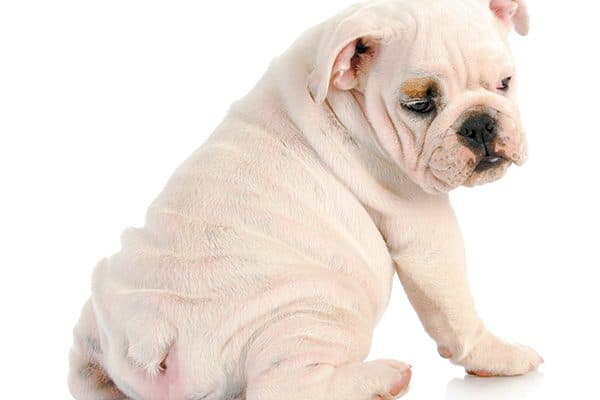The post Tips You Need to Know When Bringing a Puppy Home by Audrey Pavia appeared first on Dogster. Copying over entire articles infringes on copyright laws. You may not be aware of it, but all of these articles were assigned, contracted and paid for, so they aren’t considered public domain. However, we appreciate that you like the article and would love it if you continued sharing just the first paragraph of an article, then linking out to the rest of the piece on Dogster.com.
Everything is new when you get a puppy. Behavior, training, medicine — everything has changed since the last time you had a puppy — or maybe a puppy and everything else is all new to you. Don’t worry. These tips will walk you through some of the basic situations you may encounter when bringing a puppy home.
Introducing your puppy to another puppy

Puppies are full of fun and energy. Although another puppy the same age may respond with play bows, wagging tails and lots of excitement, older dogs may find all that energy overwhelming. Photography © MisLis | Getty Images.
The first thing to consider when bringing a puppy home, might be introducing him to another puppy! If you want to introduce two puppies about the same age, you probably don’t have to worry about them getting along. If the pups are old enough to be on a leash, let them greet one another with humans holding their leashes.
You’ll most likely see a lot of excitement from both pups as they go almost instantly into play mode — play bows, low-wagging tails and squeals of excitement. If one puppy is considerably older than the other, keep a close eye on them as they interact off leash.
When my dog, Mookie, was 12 weeks old, I introduced him to 16-week-old Denali, a friend’s puppy. It didn’t take long for Mookie to become uncomfortable with Denali, who was twice his size. Denali wanted to wrestle, but although Mookie loved to play, he didn’t appreciate Denali’s wild puppy advances. It wasn’t long before we had to separate them.
How to introduce puppies to older dogs
As dogs mature, they can become less enthused about puppies. Playful adult dogs might appreciate the energy of a rambunctious puppy, but dogs who are mellow and don’t like to play can find a puppy to be extremely obnoxious. Gauge how your adult dog feels about puppies before you allow her unsupervised time with a pup. The way you introduce the two can help with your adult dog’s attitude.
You’ll need someone to help you with the introductions, because you want both your puppy and your adult dog on leash when they meet. Make the introduction on neutral ground — a place where neither dog has spent time and laid claim. Let the dogs approach each other slowly and allow them to sniff each other.
If the puppy starts trying to jump on the adult dog, don’t be surprised if the adult dog growls or snaps at the pup. This is an appropriate response considering the puppy is behaving rudely. Most pups don’t know the rules of dog etiquette and need to learn them. If your adult dog ceases the assertive behavior after the pup backs off, she’s most likely going to be fine being around a young dog.
If the puppy doesn’t do anything overt yet the adult dog becomes aggressive — growling, snarling, snapping or lunging assertively — end the introduction. Realize that your dog may be a “puppy hater.” Some adult dogs just don’t like puppies. Period. Never leave an adult dog unsupervised with a young puppy, particularly if the adult dog has shown aggression toward the pup.
Busting that energy when bringing a puppy home
Puppies are bundles of energy, and if they don’t get enough exercise, they can get pretty wild. That’s why one of the top things to know about bringing a puppy home is how to give him plenty of playtime. Here are some energy busters for puppies:
- Toys: Find toys your puppy likes to run after, and throw them until your arm is sore.
- Play dates: Recruit another puppy as a playmate, set up a time for them to play, and let the two of them chase each other until they drop.
- Well-timed romps: Give your puppy lots of chances to tear around the yard with a case of the zoomies (especially before bedtime), training sessions and rides in the car. Never force your puppy to exercise, as it can cause trauma to developing joints and growth plates in the bones. That means no really long walks or jogging until he’s fully grown.
Dealing with boy and girl parts

It is important to know when to spay or neuter your puppy. Photography ©WilleeCole | Getty Images.
Male puppies are born with their testicles undescended, meaning that they are tucked inside their bodies and haven’t yet made an appearance. You can tell a male puppy’s gender by the tiny little sheath that houses his penis.
A female puppy has a little protuberance like the male does, but hers is closer to the base of her tail. The male’s sheath is located closer to his belly. When male puppies reach about 8 weeks of age, their testicles drop. This means they descend into the scrotum and are outwardly visible. Sometimes, it can take longer. And sometimes it doesn’t happen at all.
My dog, Mookie, was 6 months old, and only one of his testicles had dropped. By the time I had him neutered at 10 months, he was officially a monorchid: a dog with only one descended testicle. A dog with only one descended testicle — or no descended testicles, known as a cryptorchid — is still fertile and will exhibit all the behaviors of a male with two dropped testicles.
Further, the undescended testicle is prone to developing cancer later in the dog’s life. So, when Mookie was neutered, he didn’t undergo the usual procedure, which is the simple removal of the testicles from the scrotum. Instead, he had abdominal surgery to remove the testicle that never came to the surface.
Your puppy reaches sexual maturity around the age of 6 months, and this is the time to talk to your veterinarian about spaying or neutering. Bring those sex hormones to a screeching halt before they ramp up and start causing problems.
Fitting collars and harnesses

Don’t force your puppy to exercise, because he is still developing joints and growth plates in the bones. That means no really long walks for puppy, either. Photography ©cynoclub | Getty Images.
The first item to get when bringing a puppy home is a basic buckle collar. A collar holds identification tags to ensure your pup makes his way back if he gets lost. There are a vast array of buckle collars available. Nylon or cloth collars are most appropriate for puppies, who quickly outgrow them. Most have a plastic buckle clip and a way to lengthen and shorten the collar.
Start small and light when your pup is young. To determine the right size for your pup, use a cloth measuring tape to figure out the circumference in inches of his neck. Collars specify the length in inches in a range on the tag.
When you place the collar on your pup, allow two fingers’ width between the collar and his neck. Check the collar at least once a week to be certain it’s not getting tight as your puppy grows.
Dog harnesses come in a variety of colors and patterns and are usually made of nylon. They are for leash walking. Harnesses come with the leash attachment either on the front or back — or both. When fitting a harness to your puppy, use a cloth tape measure to check the size of your puppy’s neck and chest. Next, find out how much he weighs; many harnesses are labeled for a dog’s weight.
Once you’ve selected your harness, teach your puppy to enjoy putting it on. Have someone help you give your pup treats while you’re placing the harness on his body. Figure out how to put it on before you try to get it onto your dog.
Make the harness loose beforehand to make it easier to get on, then tighten it up afterward. If the harness is snug in places once you’ve put it on, lengthen whichever section is too tight. You want two fingers’ width between the harness and your dog’s body. The harness is too tight if your dog refuses to walk in it. If it’s too loose, your pup will slip out of it.
Handling tooth troubles
Puppies are all about their teeth. When puppies start switching from their baby teeth to adult dentition, a few problems can occur:
Too many teeth. Puppies are born with 28 deciduous (baby) teeth under the gum, which begin erupting at 2 weeks until they are all visible at 8 weeks. In most cases, at 12 weeks to 16 weeks, the baby teeth start to fall out and are replaced by 48 adult teeth.
In some cases, the baby teeth fail to fall out, and the puppy ends up with too many teeth in his mouth. Having extra teeth is bad because the adult teeth become crowded and may grow at weird angles. Food can also get caught between the teeth and cause gum disease. Puppies who have retained deciduous teeth by the age of 6 months should see a veterinarian to have them removed.
Broken teeth. Puppies like to chew on everything from socks to rocks. If your puppy gnaws on something hard, he can break a tooth. This includes chews and dog toys that are too firm and don’t “give” when the puppy bites down on them. (If you can’t bend it, it’s too hard for your puppy to chew.)
If a tooth breaks far enough down, the root canal could be exposed, with a huge potential for infection. When this happens, a veterinary dentist needs to fit your dog with a crown — the same kind you’d get if you had a cavity.
To keep your puppy’s teeth healthy give him soft toys and chews to gnaw on. Examine his mouth regularly, and contact your veterinarian right away if you see retained baby teeth or a broken tooth.
When it comes to watching out for your puppy, your veterinarian is your best friend. Keep your vet in the loop. She will guide you on how to protect your puppy from disease, accidents and his own silly behavior.
Thumbnail: Photography © anurakpong | Getty Images.
An award-winning writer and editor, Audrey Pavia is a former managing editor at Dog Fancy magazine and former senior editor of The AKC Gazette. She is the author of The Labrador Retriever Handbook (Barrons) and has written extensively on horses, as well as other pets. She shares her home in Norco, California, with two rescue dogs, Candy and Mookie.
Editor’s note: This article appeared in Puppies, a special issue from Dogster magazine. Look for Puppies on a newsstand near you!
Read more puppy facts on Dogster.com:
- Do You Have Scared Puppy? What to Look For — and How to Help Him
- How to Tell If a Puppy Is a Boy or a Girl
- Finding the Right Puppy Gear
The post Tips You Need to Know When Bringing a Puppy Home by Audrey Pavia appeared first on Dogster. Copying over entire articles infringes on copyright laws. You may not be aware of it, but all of these articles were assigned, contracted and paid for, so they aren’t considered public domain. However, we appreciate that you like the article and would love it if you continued sharing just the first paragraph of an article, then linking out to the rest of the piece on Dogster.com.
No comments:
Post a Comment